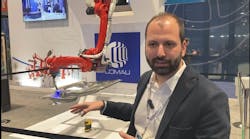Outsourcing has its economic benefits.
Like all business decisions, there is always a trade-off. For example, financial gains could be offset by issues of quality control.
However, if areas of domain expertise lie outside of an organization's own core competencies and it doesn't wish to develop them, then outsourcing is a sensible solution.
Reduction of budgeted transportation and shipping by having components built in their intended markets is a practical reason for outsourcing, but those costs typically are nominal and this scenario only makes sense when the equipment also is assembled there because the market is large enough to warrant off-site production.
The enticing sirens of cheaper labor have beckoned manufacturers for years, but am I the only one who sees the irony in machine builders outsourcing a process to reduce the labor costs of an activity that might be automated? Plus, the allure of inexpensive human capital regularly leaves companies holding an empty component cabinet as economies and standards of living inevitably improve in those countries. And how many times has a source of cut-rate labor decided to expand its own core competencies and become a competitor? In the end, cheaper labor is always a zero-sum gain.
In my conversations with various North American control engineers, they've adamantly identified and criticized one other, more alarming explanation for outsourced work"”the less-stringent environmental, safety and health restrictions in developing nations. These lax regulations make it less expensive for facilities in these countries to produce components and machinery.
Just ask John Engler, formerly governor of Michigan and now the president and CEO of the National Association of Manufacturers. NAM"” arguably the leading advocate for keeping the American dream alive through homegrown job security"”currently is pushing to block the EPA's tougher standards for national ambient air quality because their implementation would induce an additional cost of as much as $22 billion.
Is that really the best plan"”for U.S. manufacturers to become more economically competitive by lowering ESH standards to the levels of those in emerging nations? I doubt that you will ever see a similar economic strategy undertaken by the EU, the world's largest economy.
Machine Builder Nation is a globally located state with card-carrying citizens who reside within myriad political borders, each with its own ESH restrictions. When it comes to leveling the playing field for outsourced labor, does it make more sense to ease the rules and guidelines of leading economies or to continuously improve standards worldwide?
Sponsored Recommendations
Sponsored Recommendations




